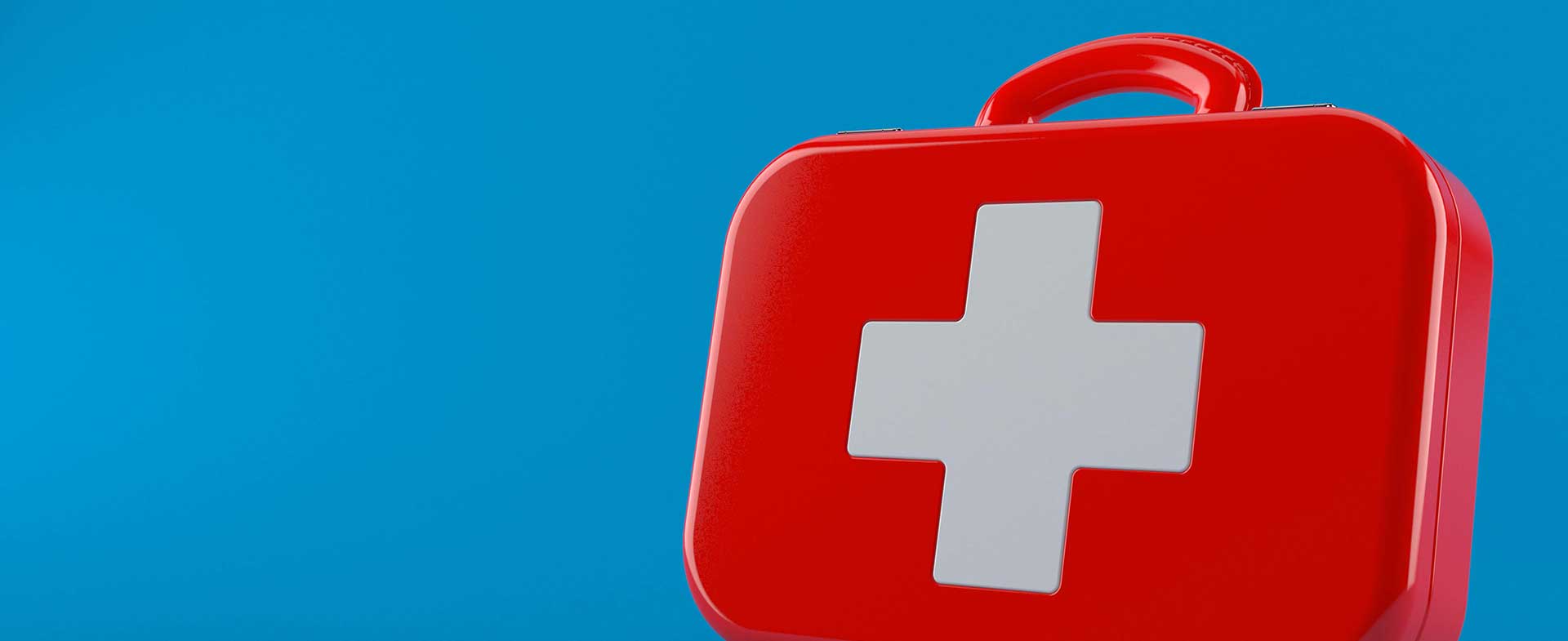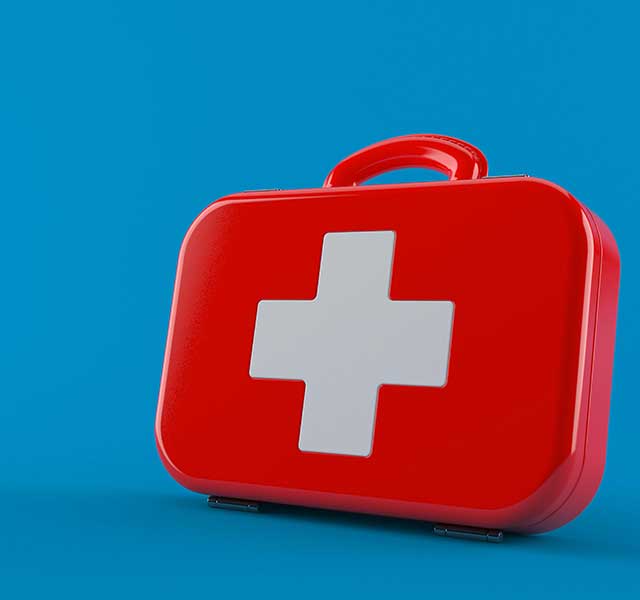When an emergency strikes, it's important to have a well-stocked first-aid kit at the ready. Experts recommend keeping kits at home and in the car so you're able to respond effectively when an accident or emergency happens.
"A first-aid kit is important to have, especially if you have children," says Andrea Smith, D.O., a family medicine specialist at Henry Ford Health. Keep your kit accessible, but beyond the reach of young children — and make sure it’s stocked with all the essentials required to tend to injuries and illness.
The Makings Of A Well-Stocked First-Aid Kit
You can buy a grab-and-go first-aid kit at any drug store, or you can put one together on your own. What you include depends largely on whether you have children or existing medical conditions and whether you engage in a lot of outdoor activities.
If you choose a prepared kit, make sure it contains everything you need in an emergency. If it doesn't, you can purchase necessary items separately and add them to the kit. No matter what your specific needs, the following items deserve some real estate in any first-aid kit:
Standard First-Aid Supplies
- Adhesive tape
- Alcohol wipes
- Cotton balls and cotton-tipped swabs
- Disposable non-latex examination gloves (several pairs)
- Hand sanitizer
- Antiseptic wipes (for disinfecting wounds)
- Instant cold packs
- Nonstick sterile bandages and roller gauze in assorted sizes
- Scissors and tweezers
- Thermometer
Medications
- Antibiotic ointment
- Antidiarrhea medication
- Antihistamine (like Benadryl)
- Aspirin (For adults with chest pain, aspirin may be lifesaving in the event of a heart attack. Never use aspirin in children or for standard pain relief.)
- Calamine lotion
- EpiPen, if prescribed by a doctor
- Hydrocortisone cream
- Laxative
- Pain relievers, such as acetaminophen (Tylenol) and ibuprofen (Advil, Motrin IB)
- Personal medications that don't require refrigeration
Miscellaneous Items
- Batteries
- Flashlight or headlamp
- Insect repellent
- Medical consent forms for each family member
- Medical history forms for each family member
- Sunscreen
- Tick removal kit (if you live in a high-tick area)
What to do if your child swallows a coin or puts a raisin up their nose.
Giving Your Kit A Tune-Up
Once you’ve prepared your first-aid kits, it's wise to check your stock at least annually. Make sure your flashlight works, medications haven't expired and that you have sufficient supplies.
"Each time you review your kit, take the opportunity to educate yourself about first-aid techniques," says Dr. Smith. "If you have a first-aid kit, it's important that you know how to use it."
Restocking the kit is also an opportunity to educate children about the importance of being prepared in an emergency. You can even sign your child up to take first-aid classes.
To find a doctor at Henry Ford, visit henryford.com or call 1-800-HENRYFORD (436-7936).
Dr. Andrea Smith is a family medicine physician, seeing patients of all ages at Henry Ford Medical Center - Detroit Northwest.



